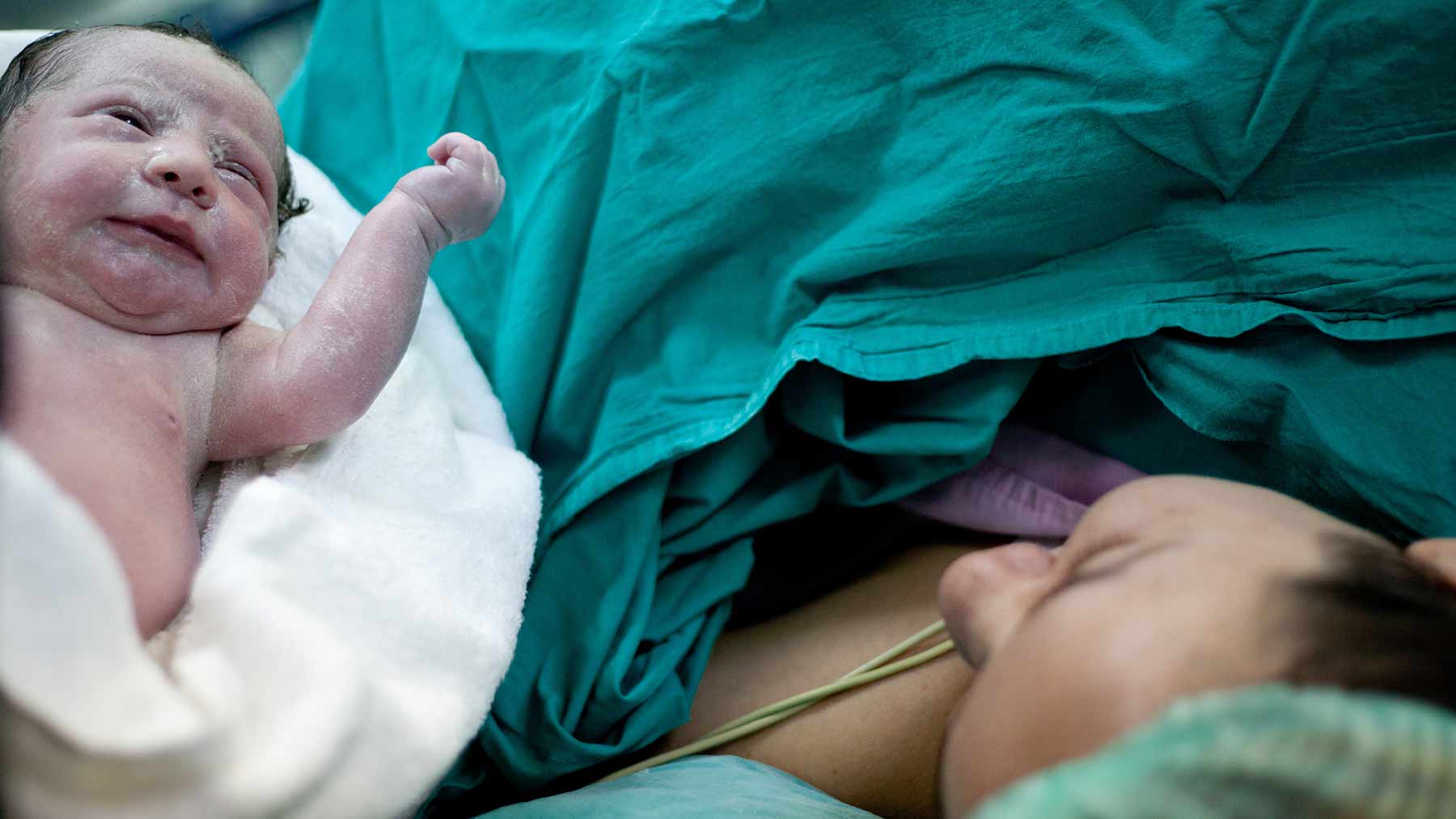All about C-sections: Before, during and after

No matter what type of birth you're planning (and hoping) for, you shouldn't rule out the possibility of a Cesarean section. In fact, the number of women delivering via C-section in the United States is nearly 1 in 3.
Whether it's a scheduled surgery or a last-minute decision, the typical C-section is straightforward and follows a tightly-scripted game plan. It’s quick, with the procedure itself lasting under an hour. Typically, getting the baby out is done in the first 10 or 15 minutes, with the rest of the time spent stitching you back up.
Unexpected or not, there's no reason a C-section has to be a totally negative experience. Knowing what to expect before, during and after a C-section can make the surgery less traumatic and help speed recovery.
In the operating room
If you’re coming to the hospital for a scheduled surgery, you’ll have blood drawn and an IV started while the staff checks how the baby is doing on the monitor. Next, you'll drink some sour stuff called Bicitra to neutralize your stomach acids.
Once you’re ready for a C-section, the first order of business is anesthesia. If you already have an epidural in place, the anesthesiologist will increase the dosage. If not, your obstetrician and the anesthesiologist will most likely choose an intrathecal (spinal).
Both involve an injection in your back (for which you'll be numbed), and will numb you from the rib cage down.
You'll be prepped by having your abdomen shaved (if necessary) and washed with an antiseptic solution. The operating room staff will insert a catheter into your bladder once you’re numb and place sterile drapes over your tummy. Your birthing coach or partner will be outfitted in sterile garb and allowed to sit near your head and hold your hand.
The emergency room staff will place a short screen blocking your vision of your abdomen, so the surgical field remains sterile and so you don't have to watch yourself getting cut. If you’d like to be more involved in the delivery, clear drapes are available that you can see through and watch what’s going on.
C-section delivery
With regional anesthesia, you won’t feel any pain during the surgery. However, when it’s time for the delivery, the surgeon may push very hard on your stomach so you will feel a lot of pressure. Before you know it, there’ll be a baby in the room. Usually, you’ll get to see your baby before it’s whisked away for care. Once the baby has been given a clean bill of health, the baby can be held by your birth partner so you can enjoy its cute face through the rest of the surgery.
Recovering from a C-section
While you may be eager to start caring for your precious (and needy) newborn, the physical and emotional recovery after a C-section takes longer than it does after a vaginal birth. In most cases, you’ll be allowed to start eating the same day as your surgery, as long as you’re not very nauseous or have other medical problems. You’ll need loads of rest, and you’ll still be bleeding and will need to wear pads for a few days.
On the second day, you'll be in less pain and will need less pain medicine. The catheter will come out, and you'll be asked to walk to the bathroom. It may feel like the nurses are pushing you before you’re ready, but it's important to get your lungs and muscles working after surgery.
By the third or fourth day, depending on whether you're also recovering from labor, you’ll be sent home. You’ll probably go home with a pain prescription in hand; don't hesitate to fill it.
It’ll take four to six weeks at home before you’ll feel back to normal, but remember that slow and steady wins this race. Although it’ll be hard to keep from taking charge at home, remember to be kind to yourself and, when you can, relax.
Jonathan Schaffir is an ob/gyn at The Ohio State University Wexner Medical Center.




